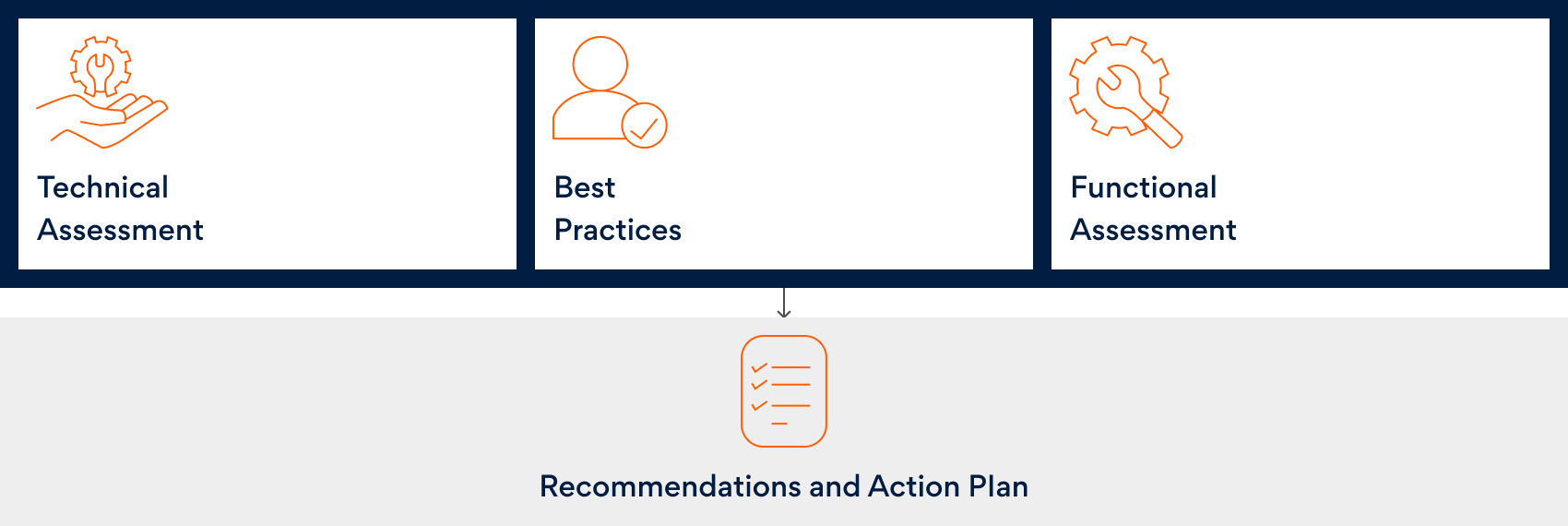View in: FR
Salesforce is a market-leading low-code/no-code platform that can transform the way businesses operate. For most organizations, implementing Salesforce is often a strategic business initiative to optimize sales processes, boost efficiency, and elevate customer satisfaction. However, depending on the organization, implementing Salesforce can be challenging and time-consuming, demanding meticulous planning and execution to ensure success.
If your organization has completed a Salesforce implementation, chances are you’ve faced a range of issues, from project delays to unrealized potential from your Salesforce instance, to outdated implementation elements that do not keep up with the latest platform offerings. This is where Persistent’s Technology Advocacy Program (TAP) can help.
TAP is a comprehensive process that involves step-by-step verification and analysis of the different areas of your Salesforce implementation to get the best out of your Salesforce platform. Persistent developed this program based on our years of Salesforce consulting and implementation experience. The TAP program not only helps optimize your Salesforce deployment but also ensures that it aligns with best practices, leading to cost savings by identifying ways to reduce storage and optimize license strategies.
How TAP Works: Identifying Gaps and Debts
Most businesses focus on functional business requirements and time-to-market in Salesforce implementations but end up adjusting plans based on non-functional requirements (NFRs), leading to reduced extensibility, maintainability, performance, security, durability, and many more NFR parameters. TAP helps identify the missing gaps and technical debts, prioritizing them for action based on relevant benefits.
A combination team comprised of a Business Analyst and Technical Architect analyzes a current implementation and interacts with technical and non-technical stakeholders to understand usage traits, patterns, and pain areas. Based on these pain areas, and further digging into technical analyses, the team identifies implementation gaps and recommended actions. Persistent’s proven recipe for analysis via TAP has successfully helped numerous customers focus their bandwidth effectively.

Why TAP: To Ensure Salesforce Effectiveness
Salesforce consistently introduces new features as part of its three-per-year release strategy, bringing numerous innovations. To maximize your investment, it’s essential to adapt to these advancements and take full advantage of the platform by staying updated with the latest features and capabilities. Here are few examples of the benefits of aligning your Salesforce platform with new releases and upgrades, something that can be assured by utilizing TAP:
- Storage: Consent management storage doesn’t count toward standard storage cost, but before the launch of this feature, many platform users implemented their own custom consent management model. The use of Salesforce Files over attachments has a lot of benefits, but by the time Salesforce released FILES storage, platform adoption was already at its peak.
- Optimization: Optimizing custom development using released features such as Salesforce flows, queries, and recommendations from Optimizer reports was not possible a few years ago. E.g. Optimization is not only limited to implementation, but also to license and cost optimization to ensure you have right set of features, sandboxes, and storage based on user personas and business needs.
- Feature adaption: We have seen many platform users procure a Salesforce Shield license to stay compliant with various regulations and standards such as HIPAA, GDPR, PCI/DSS, etc. However, a lack of in-depth knowledge about this feature results in partial benefits only. For example, Shield offers additional features such as event monitoring and enhanced audit trails, but usage patterns indicate that it is typically only used to encrypt a few fields, often without a good understanding of key management strategies.
- Integrations: The most common observation is that external APIs are consumed straight away without considering any integration patterns or the reason behind choosing the right one – such as how will they enhance Salesforce experiences for end users.
- Code quality: As a low code/no code platform, Salesforce comes with more out-of-the-box features. However, considering the platform’s multi-tenant nature and governor limits, which play a significant role in delivering an industry-standard solution, code quality is of utmost importance for success. Automated tools and manual reviews are used to assess and align the code quality with required standards.
It is important to align your Salesforce implementation with latest releases and best practices as it leads to multiple business and technical benefits. Utilizing Persistent’s TAP program permits access to a combo of industry experts who evaluate an organization’s business needs and technology alignment to meet strategic goals. Initial and incremental assessment play a vital role in getting the best out of Salesforce platform.
For more than a decade, our experienced team has developed a TAP recipe to help Salesforce platform users identify areas for improvement and recommend step-by-step changes. We understand that admittedly these changes cannot happen overnight and require setting priorities and making gradual progress while considering ongoing business needs. We typically take a gradual approach, focusing first on making easy improvements that offer the most benefits in the short term. Later, we focus on making longer-term improvements, and finally, we incorporate the latest technological enhancements to meet the platform user’s’ business needs. If you are struggling with your legacy Salesforce implementation or need direction on best practices, contact us to learn more about our TAP program can help.
Learn more about “Enabling Business Continuity by Preventing Salesforce Governor Limit Disruptions”.
Persistent’s Salesforce Healthcheck and Org Assessment
Author’s Profile
Rahul Gade
Chief Architect – Salesforce Practice at Persistent







